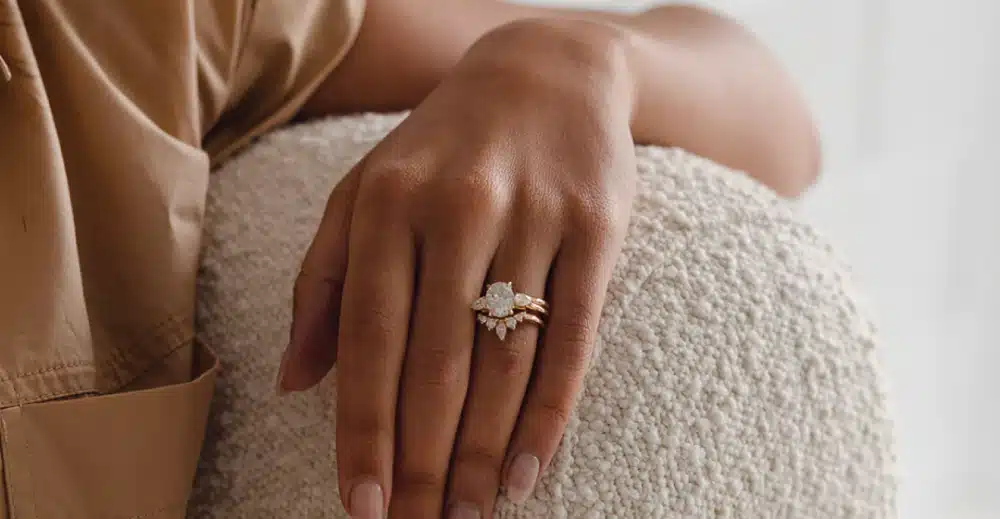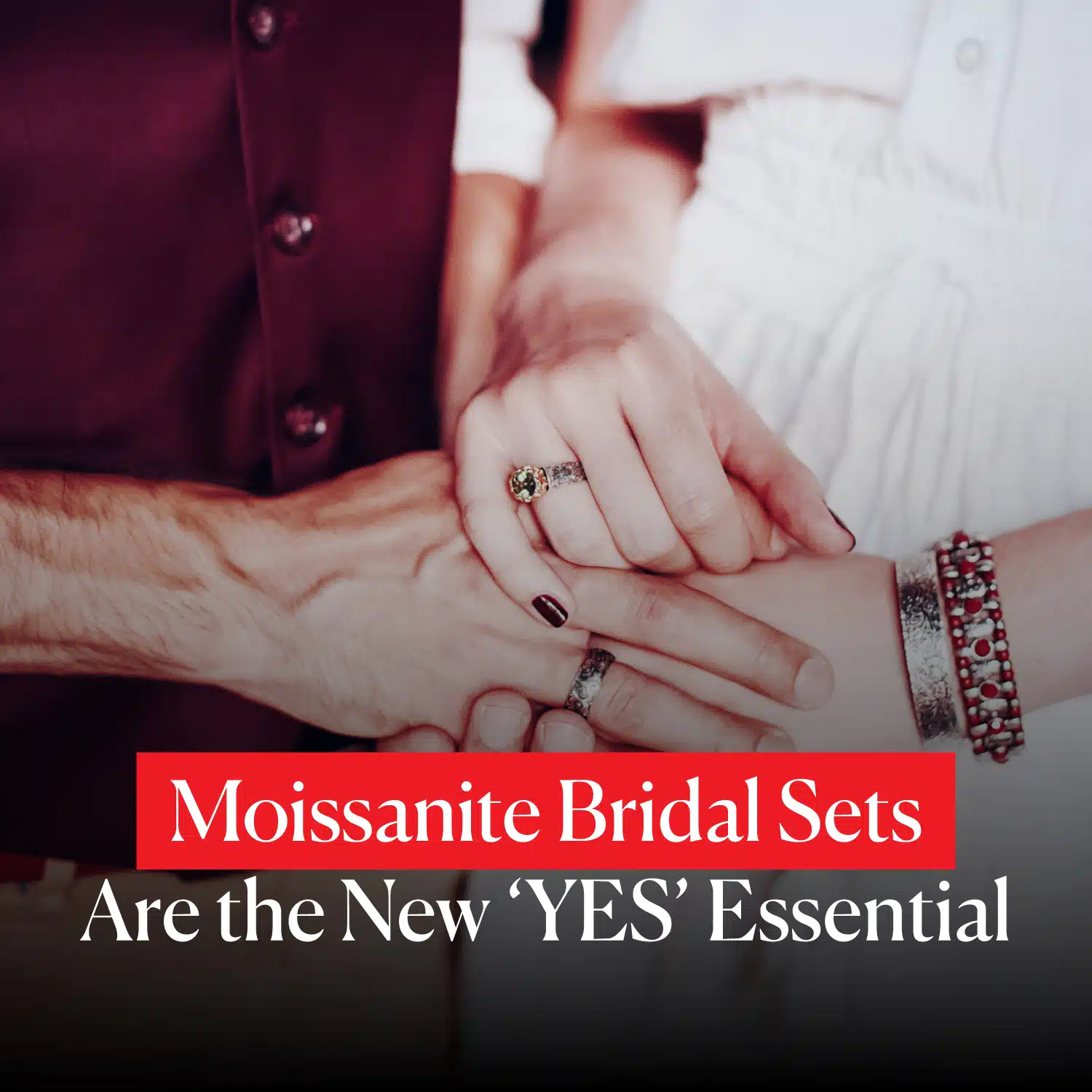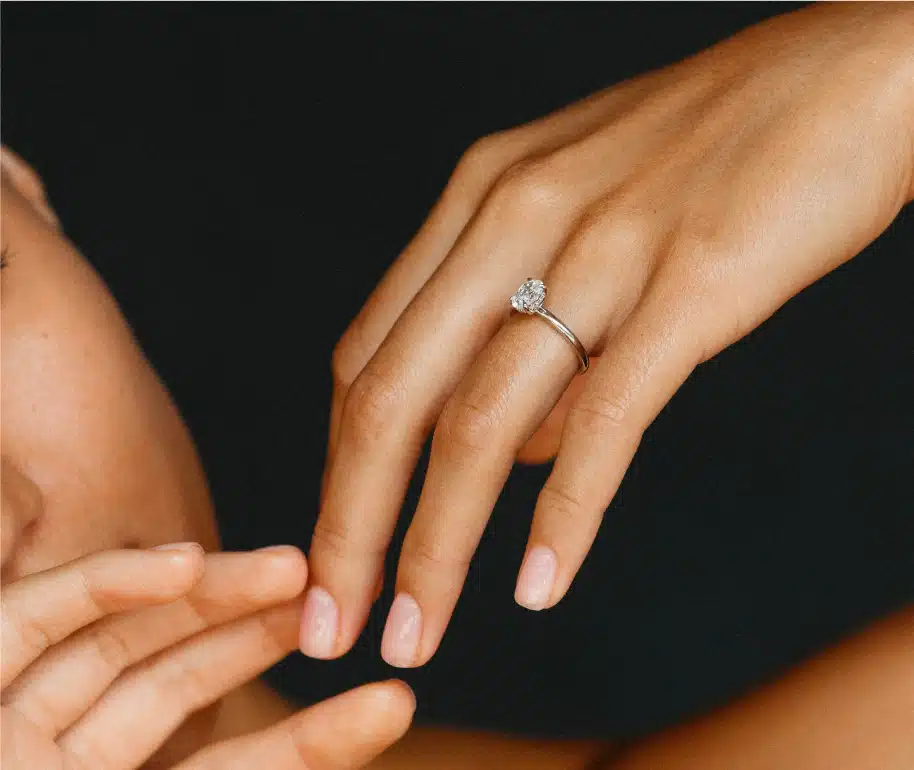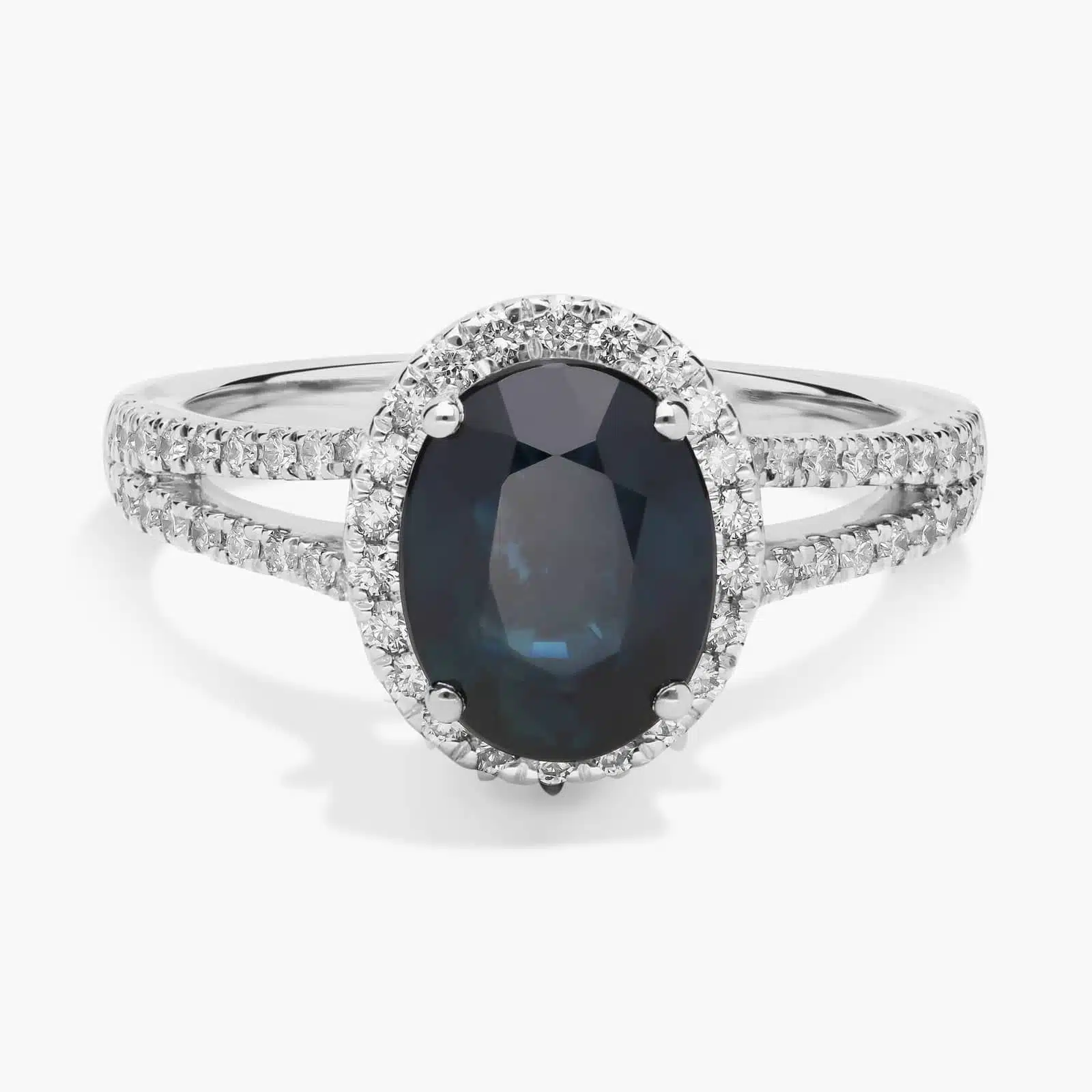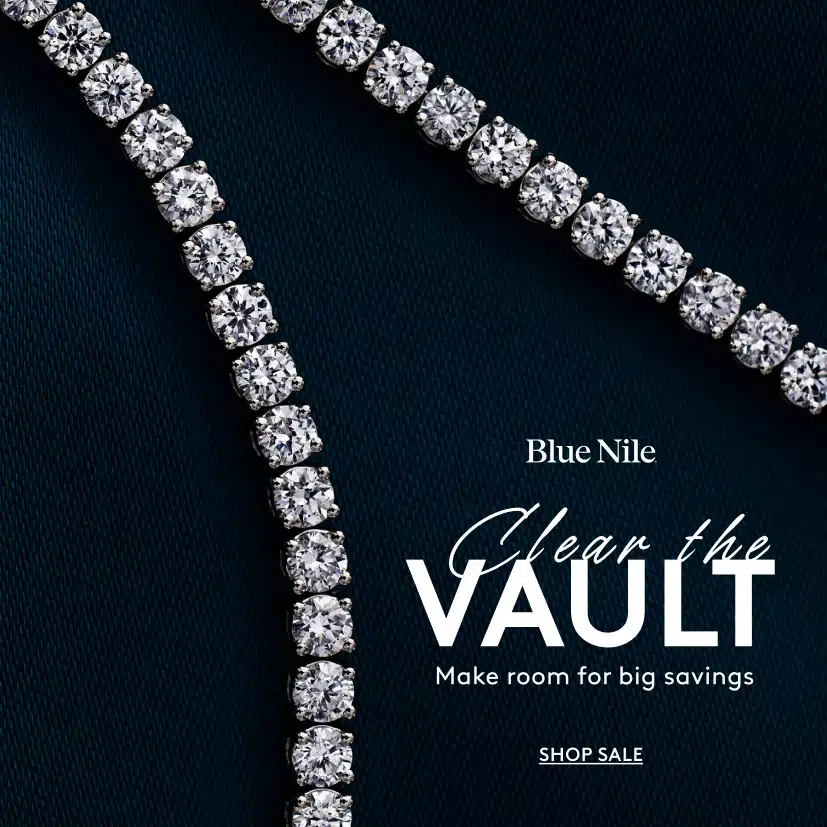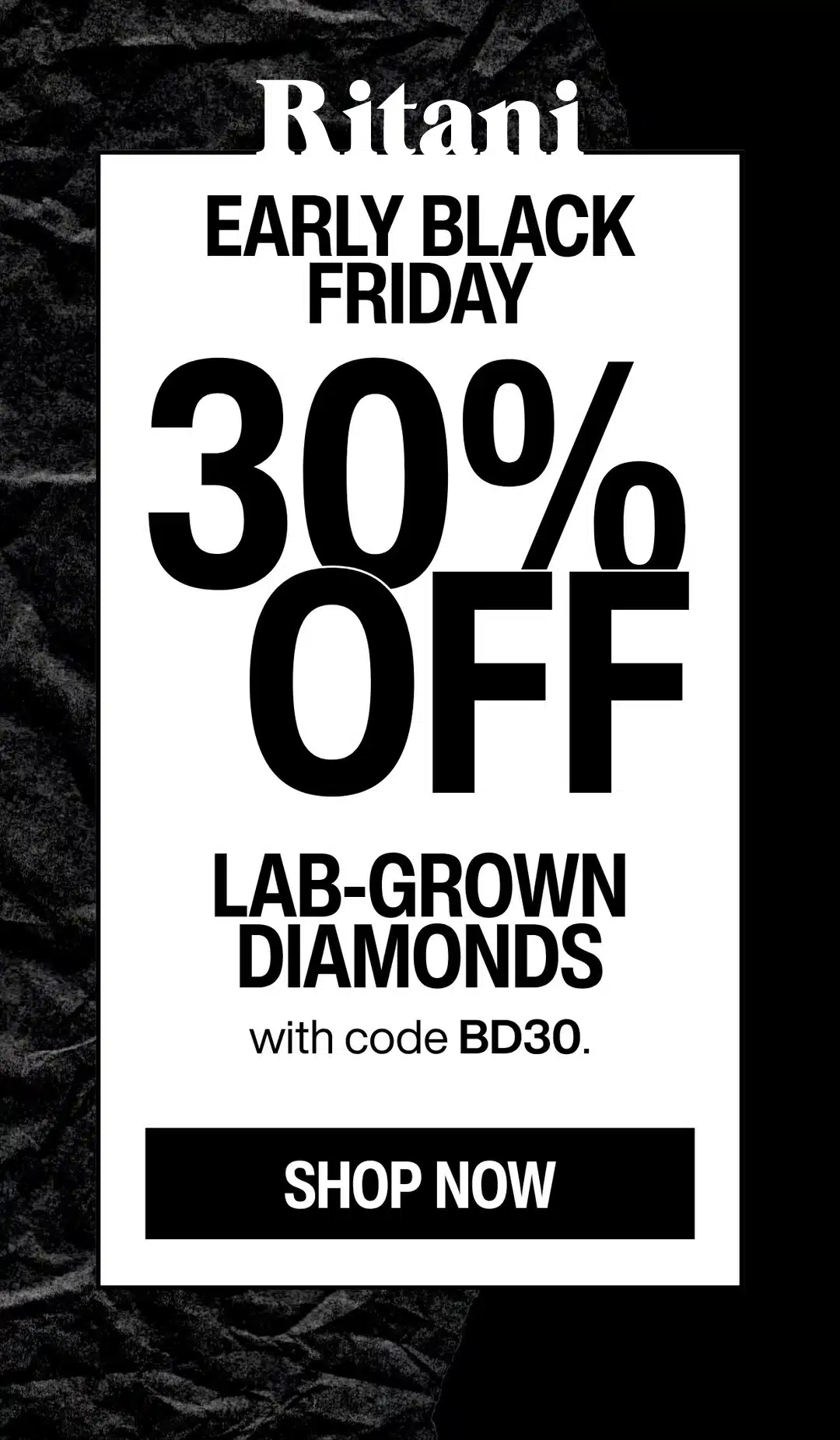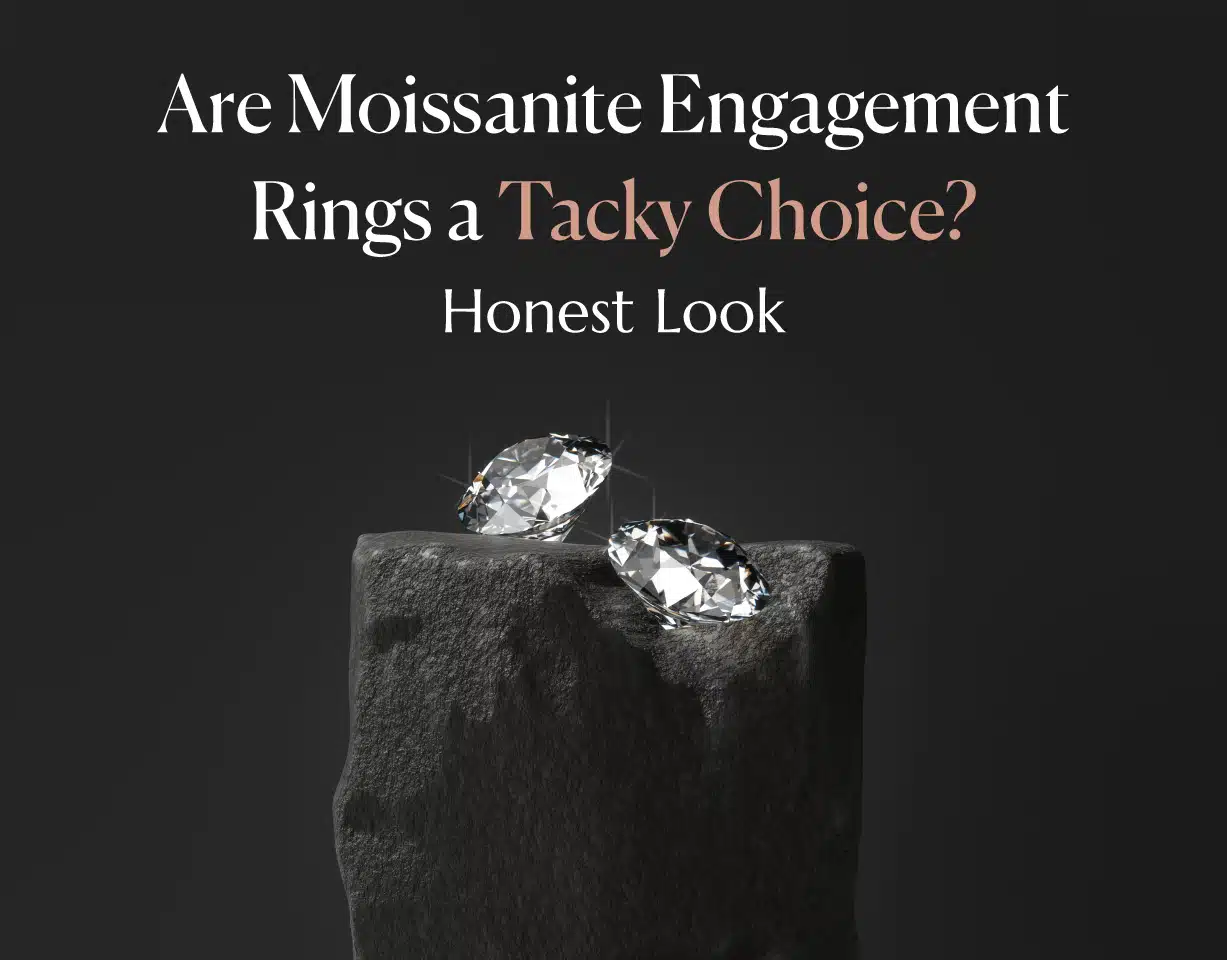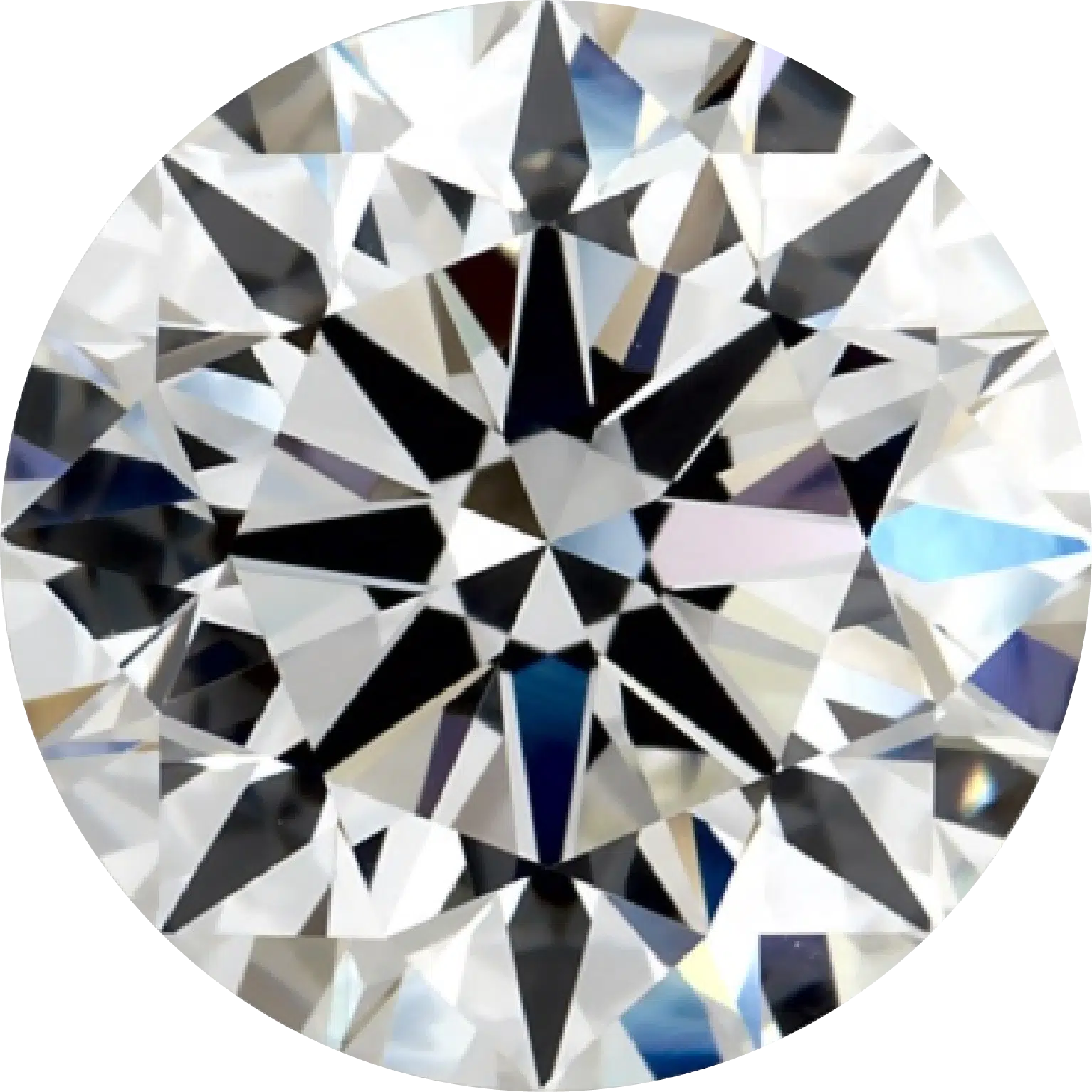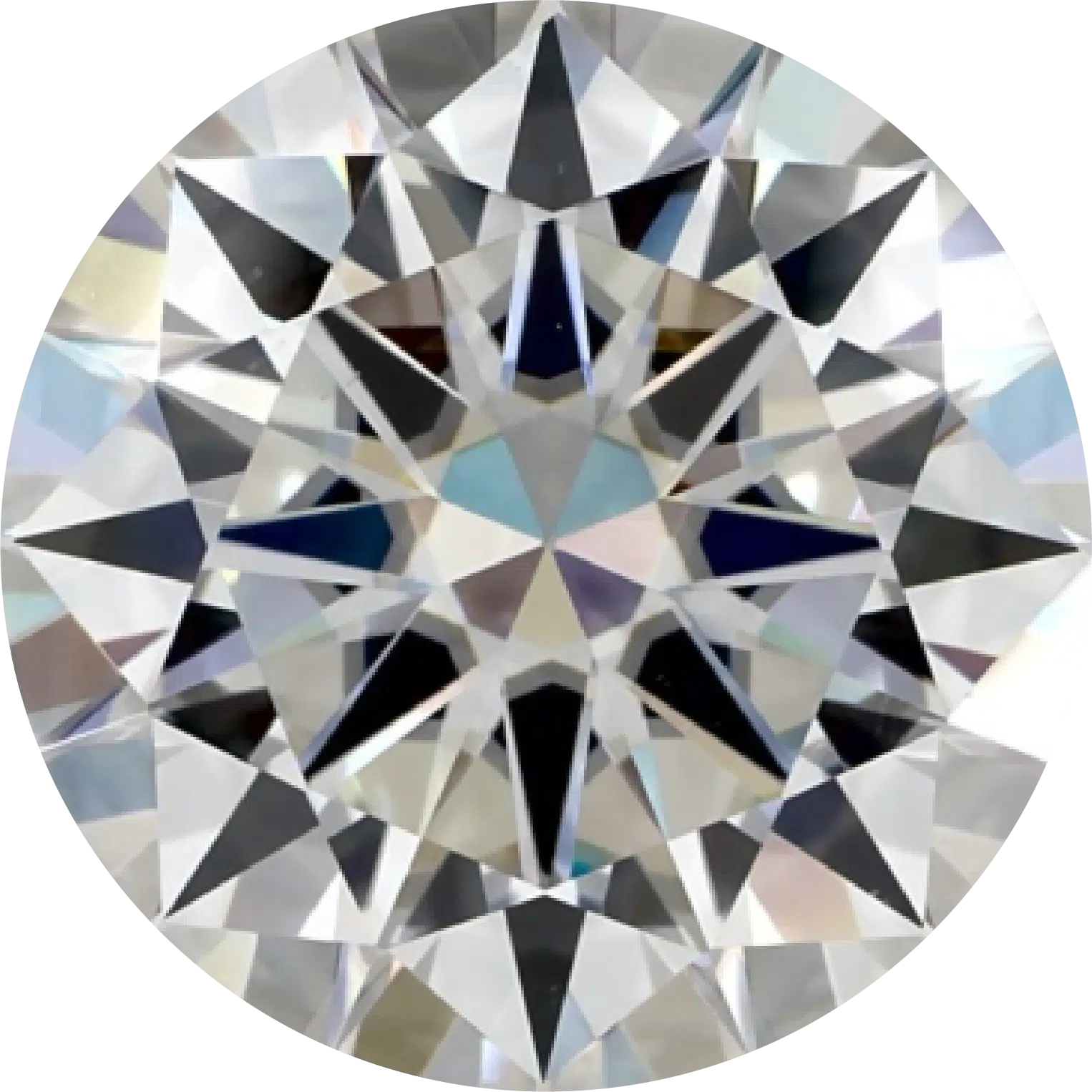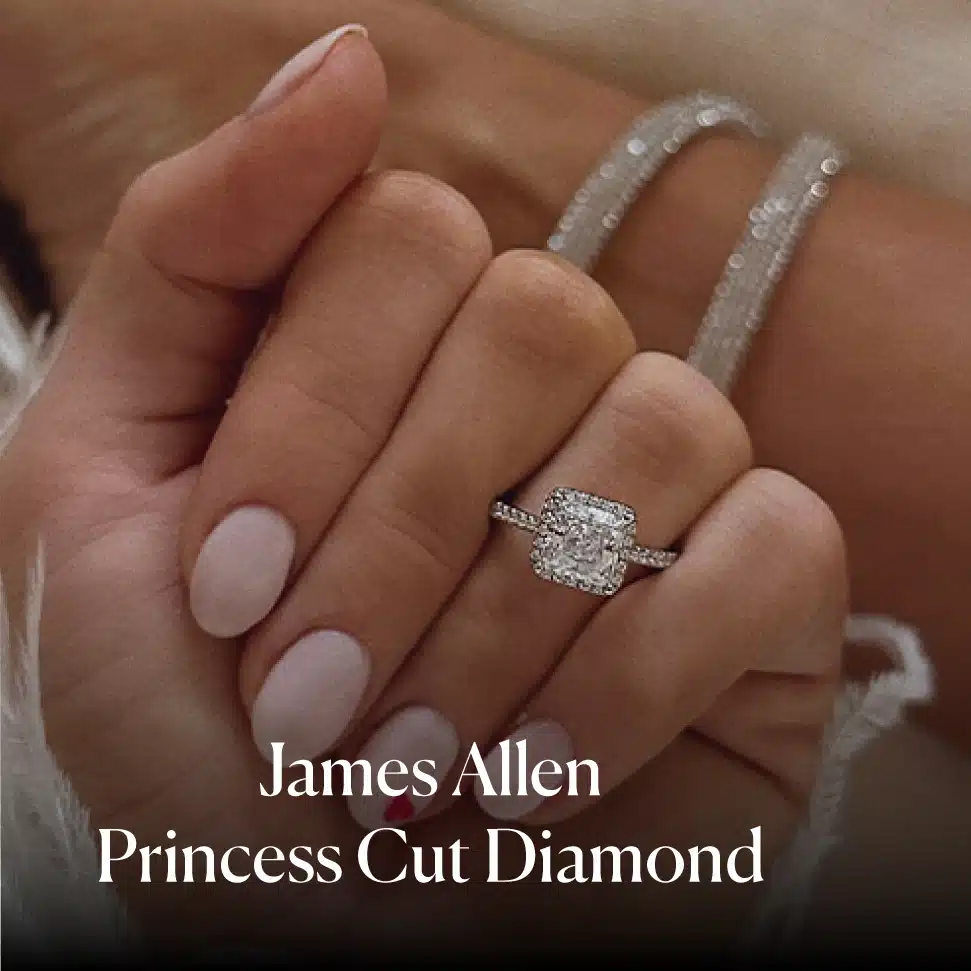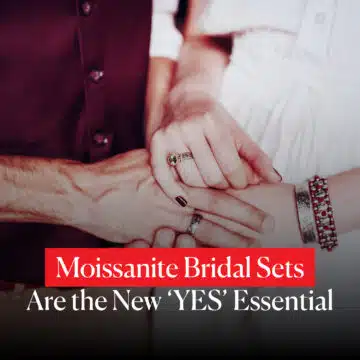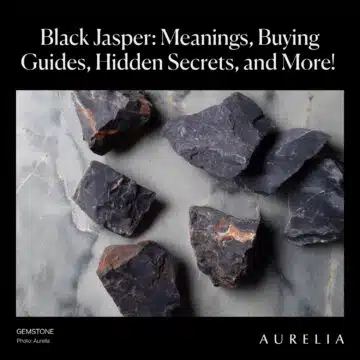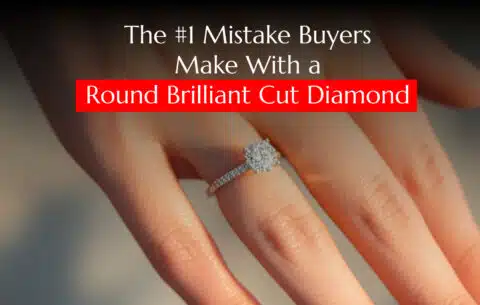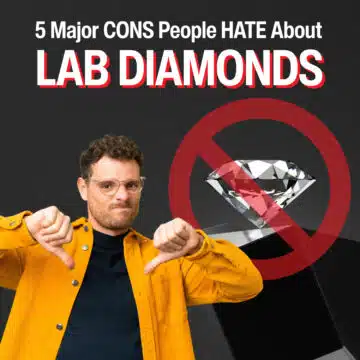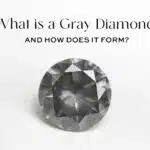No, moissanite engagement rings are not inherently tacky; they are a smart, ethical, and brilliant gemstone in their own right, and any “tacky” perception comes from outdated misconceptions or poor-quality choices, not the stone itself.
Let’s be honest, though. You’re reading this because there’s a little voice in the back of your head asking that nagging question: Will it look cheap? Will people know? And will they judge me? You’re trying to find a stunning ring that you can be proud of without feeling like you’re making a compromise.
As your friend in the business, I’m here to pull back the curtain and give you the straightforward, expert advice you won’t get elsewhere. We’ll cut through the noise together and arm you with the confidence you need to make a choice that feels 100% right for you.
- Unpacking the "Tacky" Label: 3 Misconceptions People Have
- Why I Recommend Moissanite to My Savviest Clients
- How Does Moissanite Really Stack Up Against a Diamond?
- An Honest Warning: 3 Ways to Get Moissanite Wrong
- Your Top Questions About Moissanite Engagement Rings
- My Final Advice as Your Friend in the Business
Think You’re A Moissanite Pro?
Think you’re a Moissanite Pro and can tell the difference? Choose the gemstone that you like better. Is it the one for $1,180 or the one for $39,000? Both are 2.48 carats.
Unpacking the “Tacky” Label: 3 Misconceptions People Have
Before we go any further, let’s address the elephant in the room. This fear about moissanite being “tacky” didn’t come out of nowhere. It’s tied up in decades of diamond marketing and a few key misunderstandings.
I’m going to break down the three biggest ones I hear from clients, because once you see what’s behind the curtain, you’ll realize how little they have to do with reality today.
Misconception #1: “It’s a fake diamond.”
This is the most common and, frankly, the most inaccurate idea out there. Calling moissanite a “fake diamond” is like calling a sapphire a “fake ruby” just because they’re both gemstones. They are entirely different things, and that’s not just an opinion—it’s gemology.
Here’s the quick science: Diamonds are made of compressed carbon. Moissanite is made from a completely different material called silicon carbide. It was first discovered in a meteor crater, which is a pretty cool origin story, but the mineral is so incredibly rare in nature that all the moissanite you see in jewelry is carefully grown in a lab.
This means moissanite isn’t a diamond simulant trying to fool anyone. It’s a real, distinct gemstone with its own unique chemical makeup and optical properties.
It has a fire and brilliance that is actually more intense than a diamond’s, which is one of the reasons people fall in love with it. It’s not an imitation; it’s an alternative.
Misconception #2: “It looks cheap.”
This anxiety is almost always a comparison to another, much lower-quality diamond alternative: Cubic Zirconia (CZ). For years, CZ was the go-to “fake” stone, and it rightly earned a reputation for looking glassy, getting cloudy, and scratching easily.
Moissanite is in a completely different league. The technology has evolved so much that the moissanite stones produced today are stunning. We’re talking completely colorless gems (in the D-E-F color range, the same top-tier grade as the finest diamonds) with impeccable clarity.
Where it really shines, literally, is its brilliance. Moissanite has a higher refractive index than a diamond, meaning it bends light more effectively. It also has much higher dispersion, which creates that dazzling rainbow sparkle, known as “fire.”

A high-quality moissanite will never look cloudy or dull like a CZ. It has a crispness and a fire that is immediately noticeable. With a durability rating of 9.25 on the Mohs scale (second only to a diamond’s 10), it’s tough enough for lifelong wear without scratching or losing its sparkle. It doesn’t just look good today; it’s built to look good forever.
Misconception #3: “People will know and judge me.”
This is the one that’s less about the stone and more about us. There’s a real social pressure to have a big, expensive diamond, and the fear of being judged for choosing something different is valid. But I want you to reframe that conversation.
Choosing a moissanite engagement ring isn’t about cutting corners; it’s about making a smart, modern, and personal decision. You’re prioritizing things that matter to you. Maybe that’s value—getting a breathtaking 2-carat stone for a price that allows you to also put a down payment on a house.
Or maybe it’s ethics—knowing your beautiful stone is a sustainable and 100% conflict-free lab-created gem.
True confidence comes from knowing you made an informed choice that aligns with your values and your financial future. When you love your ring and the story behind why you chose it, that’s what people see.
Honestly, most people won’t know the difference, and those who might are often jewelers like me who just admire it for the beautiful gemstone it is. It’s not a secret to be kept; it’s a smart decision to be proud of.
James Allen is widely known for their diamond expertise, but they also offer a select range of certified moissanite stones for shoppers seeking brilliance without the high price tag. Each moissanite comes with authentic certification, and many are GIA-certified, ensuring transparency, quality, and peace of mind. With stunning sparkle, ethical sourcing, and James Allen’s signature high-resolution imaging, moissanite is a smart, stunning alternative for modern couples.
WHAT WE LOVE ABOUT IT:
- Certified moissanite, including options with GIA certification—a rare find in the industry.
- High-quality stones with exceptional brilliance and clarity.
- More affordable than diamonds, with significant savings on engagement rings and fine jewelry.
- Access to James Allen’s 360° HD imaging, so you can inspect every facet before you buy.
- Backed by James Allen’s 30-day return policy, lifetime warranty, and free resizing.
- Same excellent service, packaging, and support as their diamond collections.
WHAT TO KNOW:
- Smaller moissanite selection compared to diamonds or lab-grown options.
- Not always featured prominently on their website—may need to request or inquire directly.
- Best suited for buyers who value certification and visual transparency over brand variety.
Why I Recommend Moissanite to My Savviest Clients
Over the years, I’ve worked with countless couples. The smartest ones—the clients who are most confident and forward-thinking—are increasingly choosing moissanite. It’s not because they’re trying to save a buck; it’s because they’ve done their homework and understand the incredible advantages.
When you look at the facts, you realize it’s a brilliant choice, both literally and figuratively. Here’s why I recommend it so highly.
You Get Jaw-Dropping Brilliance (That “Rainbow Effect”)
This is what makes people who see a moissanite for the first time say, “Wow.” Gemologically speaking, moissanite is “doubly refractive.” A diamond is “singly refractive.”
All you need to know is that this property makes moissanite split light into fiery, rainbow-colored flashes. A diamond sparkles with a classic, mostly white light. Moissanite sparkles with an explosion of color.
If you love that dazzling, disco-ball effect where a stone throws off intense flashes of color with every movement, then you will absolutely fall in love with moissanite’s fire. It’s a different kind of beauty, and for many, it’s a more exciting and visually stunning one.
The Unbeatable Value is a Game-Changer
Let’s talk about the most practical aspect: the price. A high-quality, colorless, and nearly flawless moissanite can be up to 90% less expensive than a diamond of a comparable size and quality. Read that again—90% less.
This isn’t about being “cheap”; it’s about being incredibly smart with your money. That massive price difference frees up your budget for things that can set you up for a better future together.
Imagine using that savings for a down payment on your first home, funding an unforgettable two-week honeymoon, paying off student loans, or simply starting your marriage on stronger financial footing. Choosing moissanite means you can have a breathtaking ring and invest in your life beyond the wedding.
It’s Durable Enough for a Lifetime of Wear
An engagement ring is a forever purchase, and it needs to be tough enough to handle your life. This is one area where moissanite truly shines. On the Mohs scale of hardness, which measures a mineral’s resistance to scratching, moissanite scores a 9.25.
A diamond is a perfect 10 on that scale, the hardest material on earth. But at 9.25, moissanite is the second-hardest gemstone used in jewelry and is more than durable enough for everyday wear. It’s significantly harder than other popular stones like sapphire (9) or emerald (7.5).
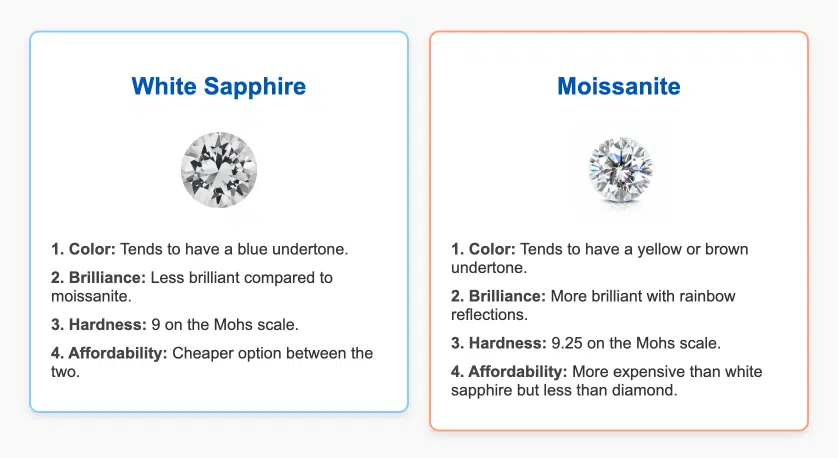
This means you can wear it with total confidence, knowing it will resist the bumps and scrapes of daily life and look just as beautiful on your 25th anniversary as it did on day one.
You Can Make an Ethical, Guilt-Free Choice
Today, knowing where our products come from matters more than ever, and jewelry is no exception. This is moissanite’s clearest advantage. Because all moissanite is created in a controlled lab environment, there is an undeniable and transparent chain of custody.
With a lab-grown moissanite, you have a 100% guarantee that your stone is ethically sourced. There are zero concerns about conflict mining, unfair labor practices, or the significant environmental damage that traditional mining can cause.
It’s a purchase you can feel entirely good about, a symbol of your love that doesn’t carry any ethical baggage. It offers a peace of mind that, for many couples, is priceless.
How Does Moissanite Really Stack Up Against a Diamond?
Alright, let’s put them head-to-head. It’s easy to talk about these differences, but sometimes seeing them laid out clearly is the best way to understand the choice you’re making. Forget the marketing spin and the jargon for a second.
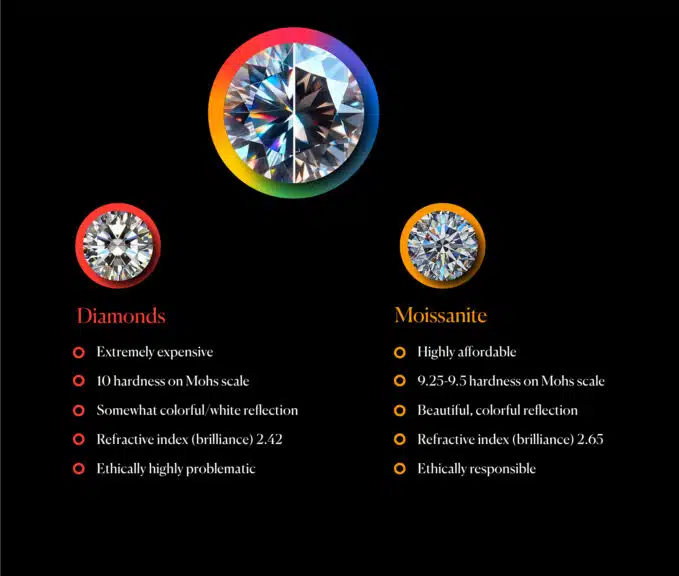
This is a simple, no-nonsense breakdown of how these two incredible gemstones compare on the factors that will actually matter to you and your wallet.
Here’s the data, plain and simple:
| Feature | Moissanite | Diamond | Why It Matters to You |
| Brilliance | Superior (Fiery Rainbows) | Excellent (White/Cool Light) | Moissanite gives off more intense, colorful sparkle. It’s a matter of personal taste. |
| Price | Significantly Lower | Very High | You can get a much larger, higher-quality stone for your budget with moissanite. |
| Hardness | 9.25 Mohs | 10 Mohs | Both are extremely durable and perfect for everyday wear. |
| Origin | Lab-Created | Mined or Lab-Created | Moissanite is always an ethically sourced and sustainable choice. |
| Color | Colorless (DEF) | Varies (D-Z) | High-quality moissanite is genuinely colorless, just like the best diamonds. |
The bottom line? Looking at this, you can see that this isn’t a matter of one stone being “better” than the other. It’s a matter of what you value most.
Do you prefer a fiery, rainbow brilliance or a classic white sparkle? Is a transparent, ethical origin a top priority for you? Is getting a larger, more impressive stone for your budget a smarter financial move for your future? There’s no wrong answer here—only the answer that’s right for you.
Related Articles:
- Moissanite vs Diamonds: Side by Side Comparison
- Diamond vs Moissanite in Sunlight: A Complete Guide
- Moissanite vs Lab Diamond Side by Side Comparison
- Simulated Diamond vs Moissanite: Which Is the Real Winner in Beauty and Budget?
An Honest Warning: 3 Ways to Get Moissanite Wrong
Okay, I’ve told you all the reasons I stand behind moissanite. Now, let me be the friend who gives you the real-talk warning. Because frankly, yes, a moissanite ring can look tacky. But it’s never the stone’s fault. The “tacky” factor comes into play when the wrong choices are made.
I want to make sure you avoid these common traps. Here are the three critical mistakes that can make any ring—moissanite or otherwise—look cheap, and how to make sure you get it right.
1. Choosing a Poor-Quality Stone
Just like with diamonds, there is a massive range in moissanite quality. The market is flooded with low-grade stones, and this is where that “cheap” look really comes from. A poor-quality moissanite will often have a noticeable, unappealing yellow or greenish tint, especially in certain lighting.
It might also have visible imperfections or a cloudy appearance that completely kills its sparkle.
The Solution: Insist on Premium Quality.
This is non-negotiable. Only buy from a reputable vendor who is transparent about the quality of their stones. You need to look for two key grades. For color, you want “colorless (D-E-F)”, which is the absolute top tier, ensuring a crisp, bright white look.
For clarity, you want “VVS (Very, Very Slightly Included)” or better, which means any imperfections are microscopic and completely invisible to the naked eye. Settling for less is where things go wrong.
Related Articles about Moissanite 4c:
- 4 C’s of Moissanite | Guide to Moissanite Types, Grades & Prices
- Colorless Moissanite: The Ultimate Diamond Alternative
- Moissanite Cut Chart: Ultimate Guide to Shapes & Sizes
- Moissanite Carat Size Chart: Find Your Perfect Ring Size
- Moissanite Clarity Scale
Looking for a diamond that blends modern edge with timeless brilliance? Princess cut diamonds at James Allen are the perfect match. Known for their sharp angles, exceptional fire, and clean, square shape, these diamonds are a popular choice for engagement rings and fine jewelry.
James Allen offers one of the largest online selections of GIA-certified princess cut diamonds, all viewable in stunning 360° HD so you know exactly what you’re getting. With up to 35% off select styles, now is the best time to shop for a diamond that’s bold, brilliant, and beautifully priced.
WHY SHOP JAMES ALLEN FOR PRINCESS CUT DIAMONDS?
- Thousands of GIA-certified princess cut diamonds in all sizes and qualities
- High-resolution 360° video lets you view each diamond from every angle
- Customize your setting in gold or platinum with just a few clicks
- Up to 35% off select diamonds and engagement rings
- 30-day returns, free resizing, and lifetime warranty included
- 24/7 expert support and insured international shipping
2. Going Unbelievably Big
This might sound counterintuitive, but bigger isn’t always better. The biggest giveaway that a stone might not be a diamond isn’t the sparkle—it’s the size relative to your lifestyle.
If you’re a recent graduate and you’re suddenly sporting a 10-carat rock, it can raise eyebrows and look ostentatious, leading people to assume it’s “fake.”
The Solution: Choose a Size That Fits Your Life.
The beauty of moissanite’s value is that it allows you to get the size you truly want without the insane price tag. But the smartest choice is a size that feels proportional and authentic to you. A beautifully cut 1.5, 2, or 3-carat moissanite will look stunning and entirely believable.
It’s about choosing a ring that complements your personal style, rather than one that feels like a costume piece.
3. Pairing it With a Cheap, Low-Quality Setting
This is the mistake that breaks my heart the most. I’ve seen people put a gorgeous, top-quality moissanite into a flimsy, poorly made setting to save a few hundred dollars. The setting is the stage for your gemstone—if the stage is rickety, the whole performance falls flat.
A cheap setting made of low-purity metals or with thin, weak prongs will make the entire ring feel cheap, devalue the stone, and worst of all, risk losing it.
The Solution: Invest in a Well-Crafted Setting.
Your setting is just as important as your stone. It provides the security, structure, and a significant part of the ring’s overall aesthetic. Insist on solid materials like 14k gold, 18k gold, or platinum.
These metals are not only beautiful and durable but also provide the necessary weight and substance that make a piece of fine jewelry feel luxurious. A well-crafted setting secures and enhances your moissanite, making the entire ring a cohesive, high-end piece.
Your Top Questions About Moissanite Engagement Rings
You’ve got questions, and I have answers. These are the most common things people ask me about moissanite, and I’m going to tackle them with the same honesty we’ve used throughout this guide.
My Final Advice as Your Friend in the Business
So, let’s circle back to the one question that brought you here: are moissanite engagement rings tacky?
My honest, professional answer is an emphatic no. The idea of moissanite being “tacky” is an outdated relic from a time of poor-quality diamond imitations and clever marketing. Today, moissanite stands on its own as a premium, brilliant, and ethically created gemstone.
We’ve seen that any “tacky” appearance has nothing to do with the stone itself, but everything to do with making smart choices—insisting on a high-quality, colorless stone and investing in a beautiful, well-crafted setting.
At the end of the day, the cultural pressure and the outside opinions don’t matter. What matters is the person giving you the ring and the person receiving it. This ring isn’t for your friends, your family, or your Instagram feed. It is a symbol of your love story and your shared future.
Choosing moissanite is not a compromise; it’s a confident, informed decision to get exactly what you want: a breathtaking, durable, and ethical ring that represents incredible value.
So, you should choose the stone you love, the one that makes your heart skip a beat, and the one that allows you to start your life together on the best possible footing.
Wear it with pride.
James Allen is widely known for their diamond expertise, but they also offer a select range of certified moissanite stones for shoppers seeking brilliance without the high price tag. Each moissanite comes with authentic certification, and many are GIA-certified, ensuring transparency, quality, and peace of mind. With stunning sparkle, ethical sourcing, and James Allen’s signature high-resolution imaging, moissanite is a smart, stunning alternative for modern couples.
WHAT WE LOVE ABOUT IT:
- Certified moissanite, including options with GIA certification—a rare find in the industry.
- High-quality stones with exceptional brilliance and clarity.
- More affordable than diamonds, with significant savings on engagement rings and fine jewelry.
- Access to James Allen’s 360° HD imaging, so you can inspect every facet before you buy.
- Backed by James Allen’s 30-day return policy, lifetime warranty, and free resizing.
- Same excellent service, packaging, and support as their diamond collections.
WHAT TO KNOW:
- Smaller moissanite selection compared to diamonds or lab-grown options.
- Not always featured prominently on their website—may need to request or inquire directly.
- Best suited for buyers who value certification and visual transparency over brand variety.

